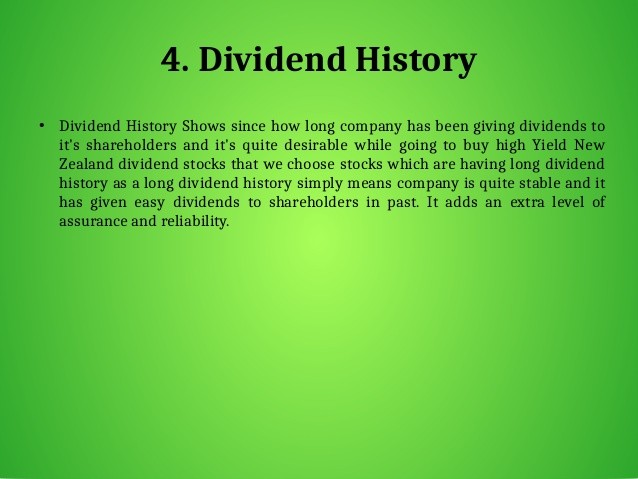How To Pick The Best Dividend Stocks
Post on: 26 Май, 2015 No Comment

Two Common Mistakes Made By Dividend Investors
2. Dividend Cuts
A dividend cut or reduction is a sign of trouble. When a company cuts its dividend its telling the market that something has gone wrong. The dividend may get cut because profits have dropped, the company is taking on too much debt or because the stock price has fallen so sharply that the yield is far beyond the industry average. Some investors ignore these cuts or even worse are not aware that they happen. In most cases, investors should sell their shares once a long-standing dividend is cut.
Seven Things to Look For When Investing in Dividend Stocks
1. Payout Ratio
The Dividend Payout Ratio (DPR) measures the percentage of dividends that are paid out to investors compared to annual profits. To calculate the payout ratio you take the annual dividend and divide it by the Earnings Per Share (EPS). If a company paid an annual dividend of $1 per share and had an EPS of $2, the payout ratio would be 50%.
In general the lower the payout ratio the better because the more the company is paying out in dividends the less they are using to build up cash, pay off debt and invest in growing the business. The general consensus is that we should be looking for dividend stocks with a payout ratio under 60%. Others say 80%, but its up to each individual investor to analyze the stock and its market to determine what seems right to them.
2. Dividend Growth Rate
The Dividend Growth Rate measures the percent of growth a dividend has experienced over a certain period of time. While many reports will use an annualized figure, its safer to use a five-year dividend growth rate. The longer period of time will give a better indication of overall performance and allow minor ups and downs to balance out.
Obviously we want to see the dividend be increased each year. The stock should be going up, profits should be going up, cash should be going up so the dividend, also, should be going up. When profits are on the decline its difficult to keep raising the dividend.
As previously mentioned, dividend stocks that have high yields can be risky and arent always the wisest investment options. Always compare the yield of the stock in question to other stocks in the same industry. If this one is much higher, it could be a sign of risk thats too high to be acceptable. When the yield is still attractive even when it appears very risky, you should take a brief look at the companys recent history to see if you can determine why the yield is so high. The stock could have recently dropped in price, or the company could be experiencing some other type of internal trouble.
4. Net Income Growth Rate
Net Income Growth is a measure of the rate of growth in profits when compared to the previous time period. It is typically reported as a percentage and can be calculated by dividing the increase in profits by the total profits earned in the previous year. For example, if a company earned $1 million in net income last year and $1.5 million this year, their net income growth rate would be calculated by subtracting $1 from $1.5 million, and then dividing by $1 million to arrive at a 50% net income growth rate.
A positive net income growth rate is very important for dividend investing. A company can still make money and have a negative net income growth rate, but they will not be able to continue to expand their operation. If we use the same example and change this years income to $0.5 million, the company has continued to make a profit. However, the net income growth rate is now -50%. The company may continue to pay dividends, but they must turn things around soon if the payments are to continue. After all, no profit at all would mean no dividend payments and a loss in shareholder confidence.
ROI, or Return On Investment, is important because it shows an investor how long it will take to earn their money back from their initial investment. It is composed of both the dividend payments and the increase in stock price. It is desirable for both of these to show a stable, upward trend. If a stock has a current ROI of 10% when both the yield and stock price increases are taken into consideration, it will take the investor approximately 10 years to recover their initial investment.
To calculate a stocks ROI, add the dividends to the increase in price and divide by the initial cost of the investment. For example, a stock is purchased for $100 a share and pays $4 a share in annual dividends. After a year, if the stock goes up $10 per share it is worth $110. The profit can be found by adding the $4 dividend payments to the $110 final stock price and subtracting the initial investment cost of $100. Your ROI can be calculated by dividing the $14 profit by the $100 initial investment to arrive at a 14% ROI.
6. Dividend Payment History














